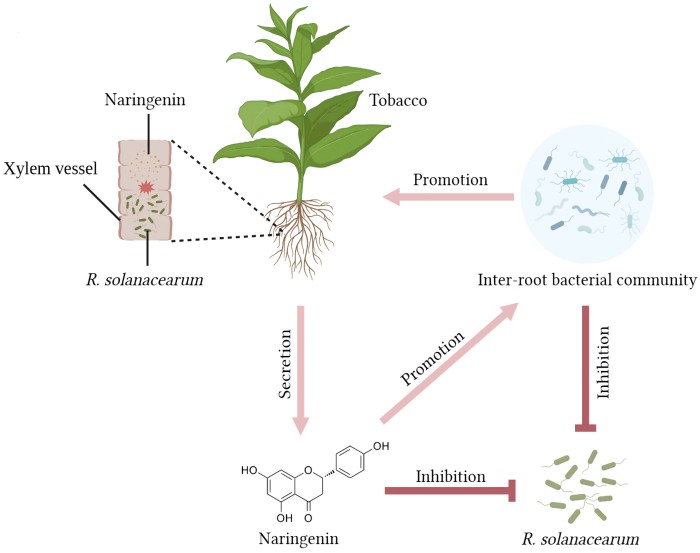
Links
Naringin enhances tobacco’s resistance to bacterial wilt
Recently, the Innovation Team of Functional Genomics from Tobacco Research Institute of Chinese Academy of Agricultural Sciences (TRI-CAAS) found that the endogenous metabolite naringin can improve plant resistance to bacterial wilt by inhibiting adsorption and colonization of Ralstonia solanacearum in tobacco roots, and revealed its underlying regulatory mechanisms. The main findings were published in Plant Physiology.
Bacterial wilt is a destructive soil borne disease that seriously endangers crop production. At present, most tobacco varieties planted in China are susceptible or moderately susceptible to bacterial wilt, and the breeding work for disease resistance lacks high resistance resources. Researchers created bacterial wilt resistant mutant KCB-1 through chemical mutagenesis of the susceptible tobacco variety CB-1, and further identified that the content of secondary metabolite naringin was significantly upregulated in the root of KCB-1. A positive correlation between naringin content in tobacco roots and bacterial wilt resistance was clarified. They also revealed the function and regulatory mechanism of naringin in inhibiting the growth and reproduction of R. solanacearum and activating multiple disease resistant metabolic pathways in plants. Finally, they used biotechnology to genetically manipulate the key gene NtCHI involved in naringin biosynthesis, and obtained breeding materials with significantly increased endogenous naringin content. Taken together, this study analyzed the disease resistance mechanisms of the tobacco bacterial wilt resistant mutant KCB-1, providing important theoretical references and germplasm materials for bacterial wilt disease resistant breeding in plants.

Original link: https://doi.org/10.1093/plphys/kiae185